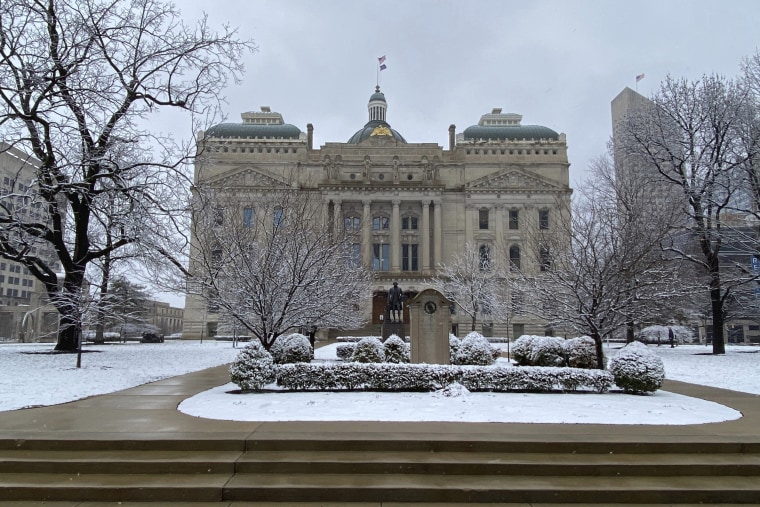A significant lake-effect snowstorm is set to ramp up Thursday and last through Friday for parts of the interior Northeast. Snowfall totals will be measured in feet, not inches.
The National Weather Service has issued winter alerts for 8 million people from the southern Appalachians up through the interior northeast and New England. These include blizzard warnings for parts of western New York downwind of Lakes Erie and Ontario. Within the blizzard warnings, wind gusts could be 55-60 mph, and snowfall totals are forecast to be 2-3 feet.
In addition to the winter alerts, 14 million people are also under wind alerts for winds that could gust 50-60 mph. These winds will cause turbulent plane rides and likely air delays for the East Coast on Thursday.
Thursday morning, heavy rain was moving out of eastern New England, as moderate snow fell across northern New England. During the day on Thursday as the storm moves away, rain will end early but strong winds will remain for the East Coast.
By Thursday, as cold air rushes in behind the exiting storm, winds will strengthen and the lake-effect snow will ramp up. Snowfall rates will be intense, at 2-3 inches per hour Thursday evening and overnight, before waning in intensity Friday. Snowfall totals of 2-3 feet (locally higher amounts up to four feet), and strong winds 50-60 mph will cause blizzard and whiteout conditions over upstate and western New York, making travel life-threatening to near impossible.
The reason why this lake-effect snow event will be so significant is because the Great Lakes are wide open with little ice cover, only 9.6 percent. This is exceptionally low, given this is the time of year when ice cover should be at its maximum for the season, which on average should be above 60 percent.
As the cold air rushes over the warm water, this will set-up lake-effect snow bands that will stretch over two and maybe three lakes in what meteorologists refer to as "double-lake" or "triple-lake" bands. The result will be one of the biggest lake-effect snowstorms of the season.
In terms of temperatures, it varies coast to coast.
Cold conditions are expected to dominate the eastern half of the country through Saturday, in contrast with warmer-than-average temperatures along the West Coast. On Wednesday, a few record highs were set across California, with several more possible Thursday thanks to highs 10-20 degrees above average. For the eastern third of the U.S., temperatures will be 10-20 degrees below average, leading to a cold end to February and a chilly start to March.

